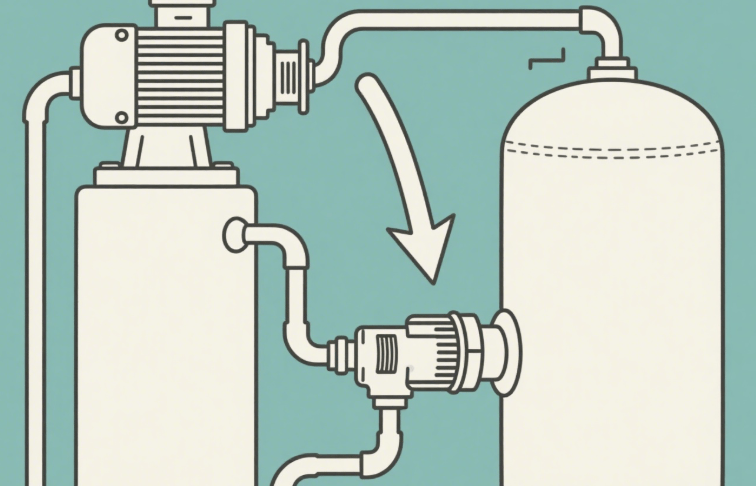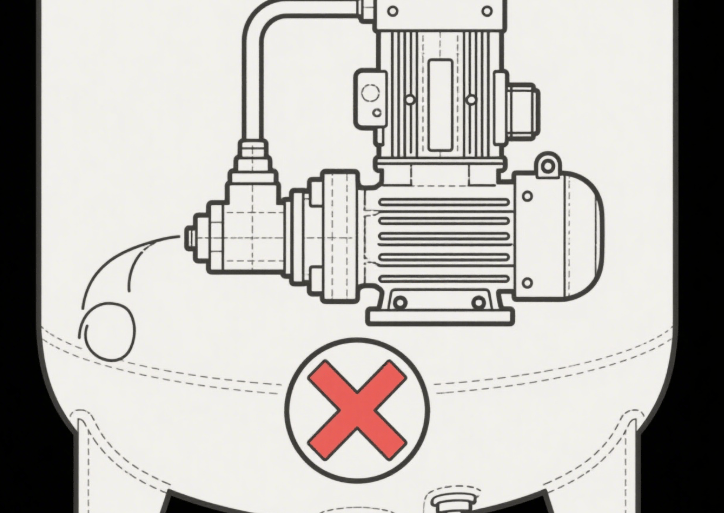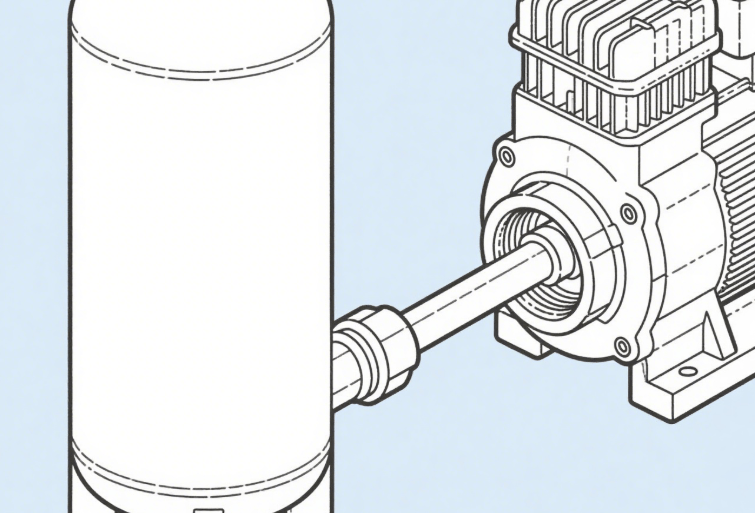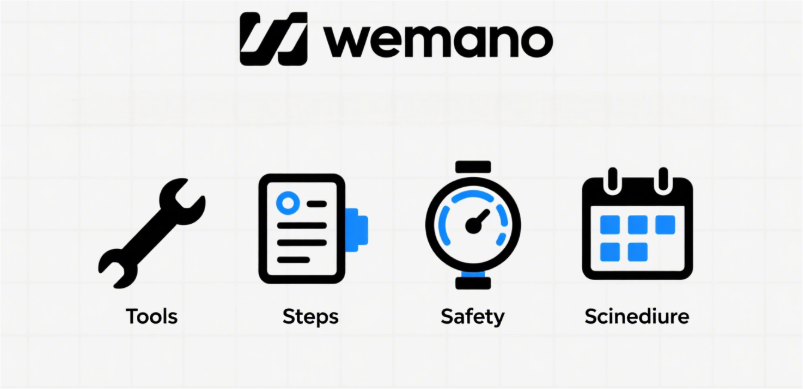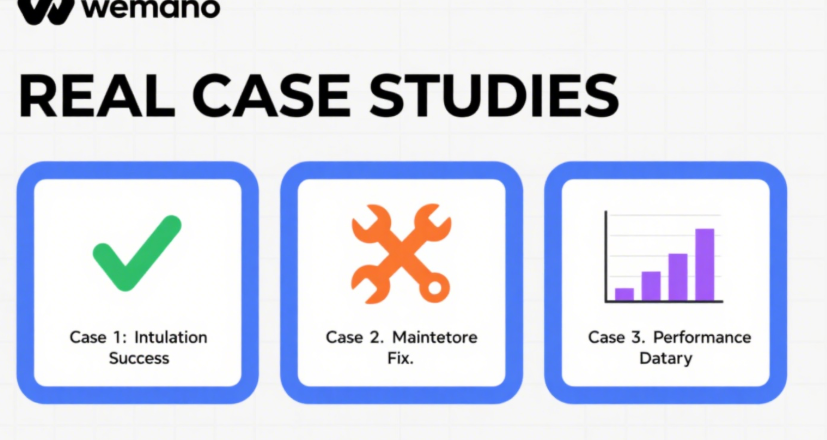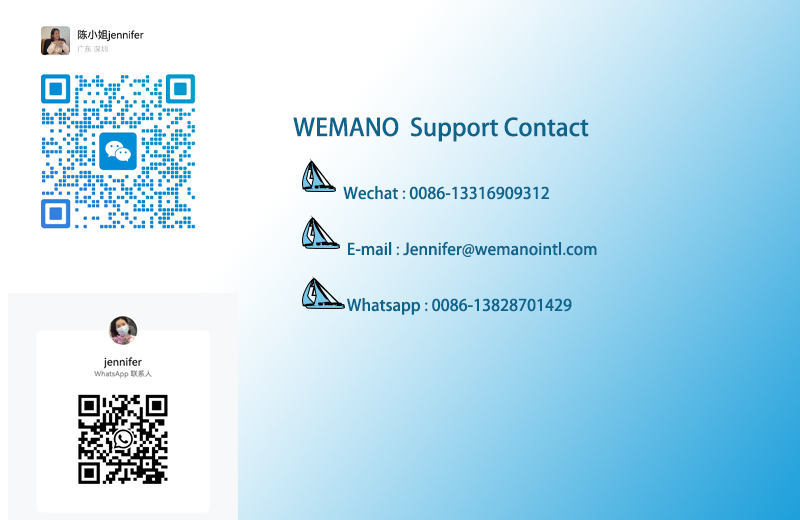Air Compressor Check Valve Usage & Maintenance Replace Guide
This guide explains their function, working principles, proper installation, and common troubleshooting methods, with real-world case studies for easier understanding.Reading this article will help improve system safety and efficiency. You’re also invited to visit the WEMANO official website for more product information and technical support.
Sofiya
7/29/20254 min read
"Our check valve: Unrivaled in seal, unmatched in anti-backflow.One-of-a-kind.Click to prove."
1. What Does an Air Compressor Check Valve Do?
An air compressor check valve (also known as a check valve for air compressor) is a one-way valve that allows air to flow from the pump into the tank, but prevents it from flowing back. This function is crucial for maintaining tank pressure and protecting internal components.
Simply put,it’s like:
When you turn on a faucet, water (just like compressed air in a compressor) flows through the pipe into the drain (similar to the air tank). But if the water in the drain tries to flow back up (like air trying to flow back from the tank to the pump), the check valve automatically closes and stops the reverse flow.
Simply put, it’s a “one-way gate”—air is allowed in, but not out. This keeps the air securely inside the tank, prevents it from flowing back into the compressor pump (which could cause damage), and helps maintain steady pressure in the tank.
There are typically three common types of air compressor check valves:
1. Tank check valve
2. In-line check valve
3. Pilot check valve
Without a properly functioning air check valve for air compressor, you may experience backflow, pressure loss, or motor damage. In many systems, this valve also allows the motor to restart without load pressure, increasing overall efficiency and longevity.
2. How to Check if an Air Compressor Check Valve Is Faulty.(Common Fault Diagnosis and Repair)
Wondering if your check valve air compressor setup is still working correctly? Here are common signs your check valve might be faulty:
1. Air leaks from the pressure relief valve when the compressor is off.
2. The compressor won't restart easily or trips breakers.
3. Slow pressure build-up in the tank.
4. Hissing sounds after the compressor stops.
5.If the tank loses pressure after shutdown or leaks continuously, the valve seal may have failed or debris is blocking it.
6.Oil Return Valve Failure Causing Oil Backflow:
The oil return check valve in screw compressors ensures lubricant returns to the compressor head.
How to inspect:
1.Turn off the compressor and release pressure from the tank.
2.Disconnect the air line going into the tank.
3.Remove the check valve and inspect for dirt, debris, or corrosion.
4.Test the valve manually—air should only pass in one direction. If it flows both ways or not at all, it’s time to replace.(For safety, always make sure your compressor is fully depressurized before opening any parts.)
5.Inspect seals, springs, and the valve core; clean or replace filters and seals as needed.(For severe leaks, replacing the entire valve is recommended.)
6.If it jams or the spring fails, oil gets carried out with compressed air, causing contamination.Remove the valve, clean debris inside, and replace faulty components.
3.Installation and Maintenance Essentials
Installation Precautions:
1.When installing, align the valve according to the flow-direction arrow to ensure correct airflow;
otherwise, it will block the flow.
2.Check that seals are intact and use thread tape or sealant to prevent leaks.
3.Install on a straight section of pipe, avoiding bends to ensure even pressure on the valve.
4.After installation, perform a pressure test to ensure there are no leaks and that the valve operates smoothly.
Routine Maintenance and Inspection:
It’s recommended to inspect the check valve at least once a year, including:
1.Listening for hissing sounds .(indicating leaks)
2.Checking if pressure drops rapidly.
3.Ensuring the valve core moves freely and springs/seals are not worn.
4.If pressure drops quickly after shutdown, the seal may have failed and should be cleaned or replaced.
If pressure drops quickly after shutdown, the seal may have failed and should be cleaned or replaced.Replacing worn parts every 1–2 years helps maintain reliable performance.
4. When to Clean or Replace Your Check Valve?
Check valves should be cleaned or inspected every 500–1,000 working hours, depending on usage conditions and environment. In dusty or humid environments, more frequent maintenance may be required.
Signs it’s time for air compressor check valve replacement:
Internal corrosion
Worn spring or valve mechanism
Cracked housing or seal leakage
Frequent start-up issues
If cleaning doesn't fix the issue or if the valve shows visible damage, it's best to install a new check valve for air compressor. Replacing it is typically inexpensive but saves you from bigger problems like motor burnout or pressure tank damage.
5.Real Case Studies:
Case 1: Aging Check Valve Causing Leak:
QUESTION:During inspection, a leak was detected after shutdown due to an aged seal.
How to do: After replacing the valve, pressure was maintained properly.
Case 2: Oil Return Valve Failure:
QUESTION: Oily air discharge was found; inspection revealed a jammed oil return valve.
How to do:After repair, clean oil-free air was restored.
Case 3: Incorrect Installation Direction:
How to do:A valve was installed backwards, preventing pressurization; fixing the direction restored operation.
6.Resources & Brand Support:
1.Parker Hannifin – Global fluid control expert.
2. CAGI – Officially defined check valve.
For more information on air compressor check valves and accessories, visit the WEMANO official website for product details and technical support.
Conclusion
A small component like the air compressor check valve plays a big role in ensuring your compressor operates safely and efficiently. Routine inspections and timely check valve replacements can extend your machine's lifespan and prevent costly repairs.
Need help choosing the right replacement? Explore our wide range of check valves for air compressors—ready in stock and factory-priced.
"Our check valve: Unique in every seal, unmatched in backflow defense. One click to feel the difference."
